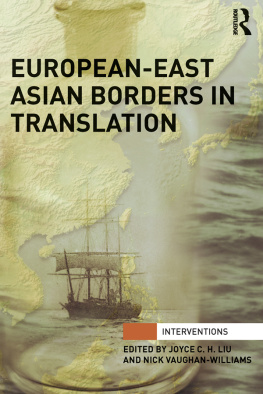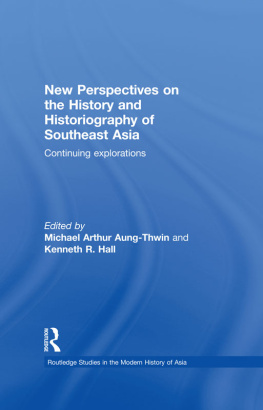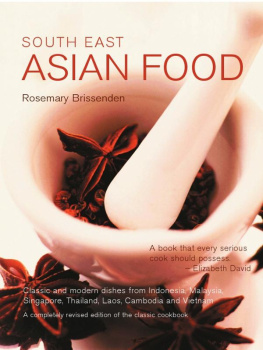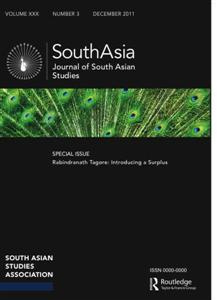ON THE EIGHTEENTH CENTURY AS A CATEGORY OF ASIAN HISTORY
VAN LEUR IN RETROSPECT
On the Eighteenth Century as a Category of Asian History
Van Leur in Retrospect
Edited by
Leonard Bluss and Femme Gaastra
First published 1998 by Ashgate Publishing
Published 2016 by Routledge
2 Park Square, Milton Park, Abingdon, Oxon OX14 4RN
711 Third Avenue, New York, NY 10017, USA
Routledge is an imprint of the Taylor & Francis Group, an informa business
Copyright 1998 The editors and contributors
All rights reserved. No part of this book may be reprinted or reproduced or utilised in any form or by any electronic, mechanical, or other means, now known or hereafter invented, including photocopying and recording, or in any information storage or retrieval system, without permission in writing from the publishers.
Notice:
Product or corporate names may be trademarks or registered trademarks, and are used only for identification and explanation without intent to infringe.
The editors and contributors have asserted their moral rights.
British Library Cataloguing-in-Publication data
On the eighteenth century as a category of Asian history:
Van Leur in Retrospect
1. Leur, J.C. van Contributions in historiography 2. Asia History 18th century 3. Asia Commerce History 18th century 4. Asia Historiography
I. Bluss, Leonard II. Gaastra, Femme
950.3
Library of Congress Cataloging-in-Publication data
On the eighteenth century as a category of Asian history: Van Leur in retrospect / edited by Leonard Bluss and Femme S. Gaastra.
1. Asia History. 2. Leur, J.C. van (Jacob Cornelis), 1908-1942. I. Bluss, Leonard. II. Gaastra, F.S.
DS33.7.05 1998
CIP
ISBN 9781840146103 (hbk)
Transfered to Digital Printing in 2011
Contents
Jaap Vogel |
David K. Wyatt |
J. Kathirithamby-Wells |
Mason C. Hoadley |
Dhiravat Na Pombejra |
Akira Hayami |
Yko Nagazumi |
William T. Rowe |
Zhuang Guotu |
Irfan Habib |
Om Prakash |
S. Arasaratnam |
C.A. Bayly |
The editors wish to thank the staff of the Netherlands Institute for Advanced Studies at Wassenaar for their generosity and hospitality in making a success of the colloquium out of which this book has grown. In the academic year of 19921993 nine historians of Asia, S. Arasaratnam, F.S. Gaastra, J. van Goor, H.K. s Jacob, J. Kathirithamby-Wells, Y. Nagazumi, Dhiravat na Pombejra, Om Prakash and Zhuang Guotu spent a sabbatical year at the invitation of the NIAS Institute working in addition to their own research agenda within the In memoriam J.C. van Leur theme group, which was led by Femme Gaastra and Om Prakash. During this year at NIAS these scholars also gave lectures or participated in workshops organized in collaboration with the staff of the Center for the History of European Expansion of Leiden University. In most cases that fruitful year has resulted in a monograph. Two contributions to the NIAS colloquium, that are connected with our theme but outside the scope of this present volume, have been published in Itinerario, vol 18 (1994): F.S. Gaastra, Private Money for Company Trade; the Role of Bills of Exchange in financing the Return Cargoes for the VOC (no.1, pp. 6576), and H.K.s Jacob, State Formation and the Role of Portfolio Investors in Cochin, 16631700 (no.2, pp. 6583).
Our gratitude also goes to Professor K.N. Chaudhuri, who kindly provided the opportunity to discuss the outcome of the revised drafts of the NIAS colloquium during a workshop at the European University Institute in Fiesole in February 1994. The present volume could not have been submitted to Ashgate without the code-breaking efforts of Marten Brienen, graduate student at the Leiden Center, and the firm support of John Smedley and his able staff.
The editors
The Eighteenth Century as a Category in Asian History
LEONARD BLUSS and FEMME GAASTRA
During the 1930s, the young colonial administrator J.C. (Job) van Leur acquired the reputation of a rebel and iconoclast among Dutch historians. This was without doubt owing to his contentious and critical writings. In his doctoral thesis, Eenige beschouwingen betreffende den ouden Aziatischen handel (Some Observations on Traditional Asian Trade, 1934), he questioned in no uncertain terms the Europa-centric and positivistic bias of colonial historiography on early Dutch expansion overseas. Van Leur believed that the consequences of the intrusion of the early-modern European East India Companies into the trading world of Asia were not nearly as wide-ranging as most Dutch historians portrayed them. By contrast, Van Leur argued that not until commercial capitalism was succeeded in the early nineteenth century by industrial capitalism did the European presence in Asia became predominant.
The young historian found his inspiration in Max Webers writings about the phenomenon of modernization which, as an offspring of modern capitalism and the new industrial economy, had turned a traditional world of pedlars, peasants, feudal lords and clerics into a throbbing hive of organization, machinery, and labour movement. Consequently he proposed that early-modern maritime trade in Asia be analysed by focusing primarily on the personalistic forms of organization which characterized traditional society. In Webers model of the patrimonial society, the size of trading markets continued to be constrained by factors such as the high risk of transporting valuable goods, the lack of widespread systems of credit to facilitate long-distance trading, and finally the distrust of strangers which limited trade to the level of bartering and shrewd haggling. Van Leur showed that the problems imposed by these factors had been largely overcome in the intra-Asian maritime trade of pre-modern times. The monsoon system favoured regular navigation, forms of credit and commenda had developed to a markedly high level of reliability, and finally the very well-developed bureaucratic institutions represented by sea laws and port regulations assured the proper conduct of traffic between the various nations at port polities such as Melaka. This was the dynamic maritime trading world into which the Europeans made their entrance and found themselves a niche. Initially these theories about the long-term developments in the intra-Asian long-distance trade and the modest role held by Europeans in the existing trading networks received little response. Van Leur did not live to witness the change in the appreciation of his work, the fruit of the efforts of his faithful friend, the sociologist-historian, W.F. Wertheim. On Professor Wertheims suggestion, a choice of Van Leurs historical writings was translated into English and published in 1955 under the title Indonesian Trade and Society. Thus Van Leurs bold and thought-provoking doctoral dissertation and some of his later essays found an audience in the larger international readership in a post-colonial world.1










